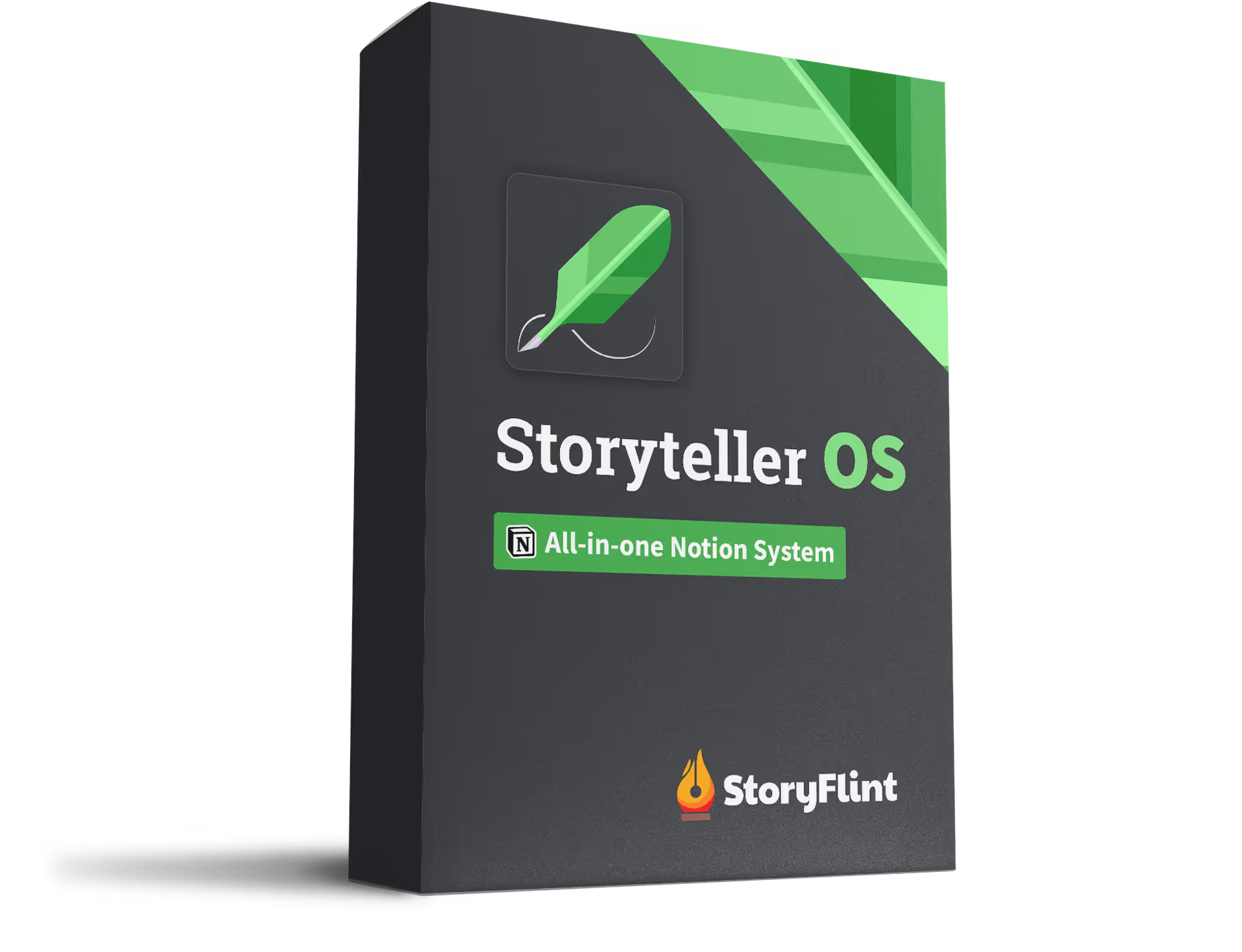Crafting a memorable story ending is an art. It’s not just about wrapping up plot lines but leaving a lasting impression that resonates with readers. For aspiring writers and creative storytellers, mastering this can elevate your narrative to new heights. Let's explore how you can create an impactful conclusion to your story.
Types of Endings
Understanding the different types of story endings can help you decide which suits your narrative best:
Resolved Ending
This type of ending ties up all loose ends and provides a clear conclusion to the story's conflicts and character arcs. It offers closure and satisfaction, leaving the audience with a sense of completion. For instance, One Hundred Years of Solitude by Gabriel García Márquez wraps up its complex narrative threads in a way that aligns with the themes of inevitability and fate.
Unresolved Ending
Here, some plot elements remain open, leaving the audience in suspense or anticipation. It can be cathartic by engaging the audience's imagination and keeping them intrigued for future developments. The ending of Harry Potter and the Half-Blood Prince leaves various story elements unresolved, setting the stage for the final book in the series.
Ambiguous Ending
This ending leaves room for interpretation, allowing the audience to draw their own conclusions about the story's outcome. It invites reflection and discussion, offering a unique sense of catharsis through engagement. The Giver by Lois Lowry ends ambiguously, encouraging readers to ponder the implications of the protagonist's journey.
Unexpected Ending
An ending with a twist that surprises yet fits the narrative can be deeply satisfying as it subverts expectations while maintaining coherence. And Then There Were None by Agatha Christie exemplifies this with its surprising resolution that cleverly ties back to the story's clues.
Tied Ending
This type of ending brings the narrative full circle, reflecting or contrasting with the beginning. It provides a sense of unity and completeness, resonating deeply with the audience. The Night Circus by Erin Morgenstern uses this approach, echoing its opening themes in the conclusion.
Expanded Ending
Often in the form of an epilogue, this ending extends the story beyond the main narrative, offering additional insight into the characters' futures. It provides closure and satisfaction by addressing lingering questions. The Book Thief by Markus Zusak includes an epilogue that enriches the story's resolution by showing the characters' lives after the main events.
Essential Elements of an Effective Ending
To craft a compelling ending, consider these key elements:
Resolution of Conflict
Every story builds on conflict, and resolving this conflict is crucial for a satisfying ending. This closure answers the central questions that have driven the narrative, providing a sense of fulfillment. For example, in The Lord of the Rings: The Return of the King, the destruction of the One Ring resolves the overarching conflict, bringing peace to Middle-earth.
Character Development
Characters should exhibit growth or change by the end of the story, reflecting their journey's impact. This transformation is vital for reader satisfaction as it showcases the characters' evolution. In Harry Potter and the Deathly Hallows, Harry's maturity and understanding culminate in his selfless actions, completing his character arc.
Thematic Cohesion
The ending should align with the story's themes, reinforcing the message or moral. This creates a unified narrative experience. In To Kill a Mockingbird, the resolution underscores themes of justice and empathy, leaving a powerful lasting impression.
Emotional Impact
A compelling ending evokes emotion, whether it's joy, sadness, or contemplation. This emotional resonance ensures the story stays with the audience. The bittersweet conclusion of The Fault in Our Stars leaves readers reflecting on love and loss.
Clarity
While some stories benefit from ambiguity, clarity in resolving the main plot points prevents confusion and enhances audience satisfaction. The Shawshank Redemption provides a clear, uplifting resolution that ties up the story's threads, leaving viewers with hope.
Surprise and Predictability Balance
A great ending may incorporate unexpected twists, but it should still feel earned and logical within the story's context. Fight Club delivers a shocking twist that retrospectively makes sense, engaging the audience with its cleverness.
Pacing and Timing
The ending should be well-paced, avoiding unnecessary prolongation or abruptness. Proper pacing ensures that all elements are resolved without dragging, as seen in The Matrix, which concludes swiftly after the climax, avoiding "ending fatigue."
Mistakes to Avoid When Writing an Ending
Avoid these pitfalls to ensure your ending is effective:
- Rushing the Conclusion: Don’t wrap up too quickly after the climax. Allow space for falling action.
- Introducing New Information Late: Keep new exposition out of the final stages.
- Neglecting Character Growth: Ensure characters evolve and fulfill their arcs.
- Overcomplicating the Resolution: Simplicity often strengthens the emotional impact.
- Ending Fatigue: Avoid prolonging the conclusion, which can dilute satisfaction.
Examples of Effective Endings from Media
- The Shawshank Redemption: This film exemplifies thematic cohesion and emotional impact. The ending resolves the central conflict with Andy Dufresne escaping from prison and reuniting with Red, reinforcing themes of hope and redemption. The emotional resonance of their freedom leaves a lasting impression on the audience.
- Inception: The film's ambiguous ending, where the spinning top is left unresolved, balances surprise and predictability. It invites viewers to ponder the nature of reality, engaging them emotionally and intellectually. This ending is effective due to its clarity in terms of theme but leaves enough uncertainty to spark endless discussion.
- The Lord of the Rings: The Return of the King: This ending is a masterclass in resolution of conflict and character development. It wraps up the epic journey with the destruction of the One Ring and the return to peace in Middle-earth. Frodo and Aragorn's arcs are completed, providing a satisfying closure both emotionally and narratively.
- Breaking Bad: The series finale effectively combines resolution of conflict and character development. Walter White's story concludes with his acknowledgment of his actions and the resolution of his conflicts with the police and rival gangs. The ending ties up major plot threads, providing a clear and complete resolution.
- The Sixth Sense: This film's ending is renowned for its surprise and predictability balance. The twist that Dr. Malcolm Crowe is actually dead retroactively clarifies earlier events, making viewers re-evaluate the narrative. This twist is earned through meticulous foreshadowing, making it both shocking and satisfying.
- Toy Story 3: The film's ending delivers a strong emotional impact through thematic cohesion and character development. As Andy passes on his toys to Bonnie, it encapsulates themes of growth, change, and letting go, leaving audiences both tearful and fulfilled.
- Fight Club: The ending achieves a perfect balance between surprise and predictability. The twist regarding Tyler Durden’s true identity forces a reconsideration of the entire story, while the narrative’s consistent themes on identity and chaos make the twist coherent and impactful.
- Harry Potter and the Deathly Hallows: The Harry Potter series concludes with clarity and thematic cohesion. Voldemort’s defeat resolves the core conflict, and the epilogue provides closure by showing the characters’ futures, reinforcing themes of love and sacrifice.
- The Matrix: Known for its concise pacing and clarity, the ending swiftly concludes after the climax, avoiding "ending fatigue." Neo’s final showdown and his newfound powers provide a clear resolution to the story's central conflict, leaving a strong impression.
- The Godfather: The film ends with thematic cohesion and character development. Michael Corleone’s transformation into the head of the family is complete, emphasizing themes of power and corruption. The closing door scene is iconic, symbolizing his final step into the world of crime.
Conclusion
An effective story ending is the culmination of your narrative's themes, character arcs, and dramatic tension. By understanding the types of endings, incorporating essential elements, and avoiding common pitfalls, you'll craft conclusions that leave a lasting impact.





